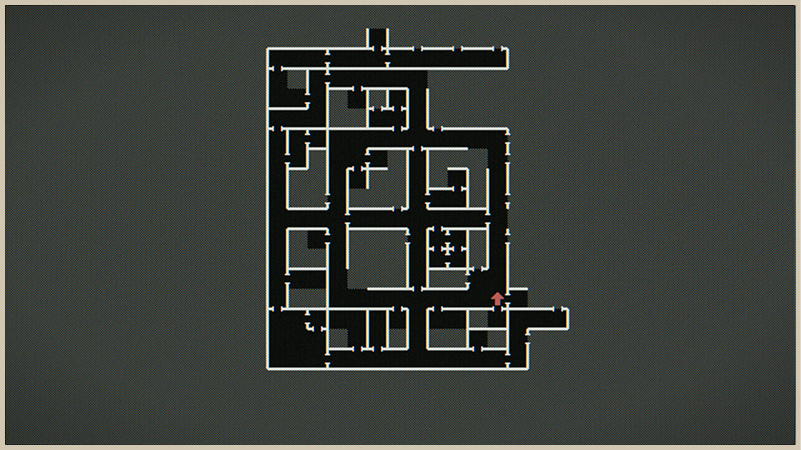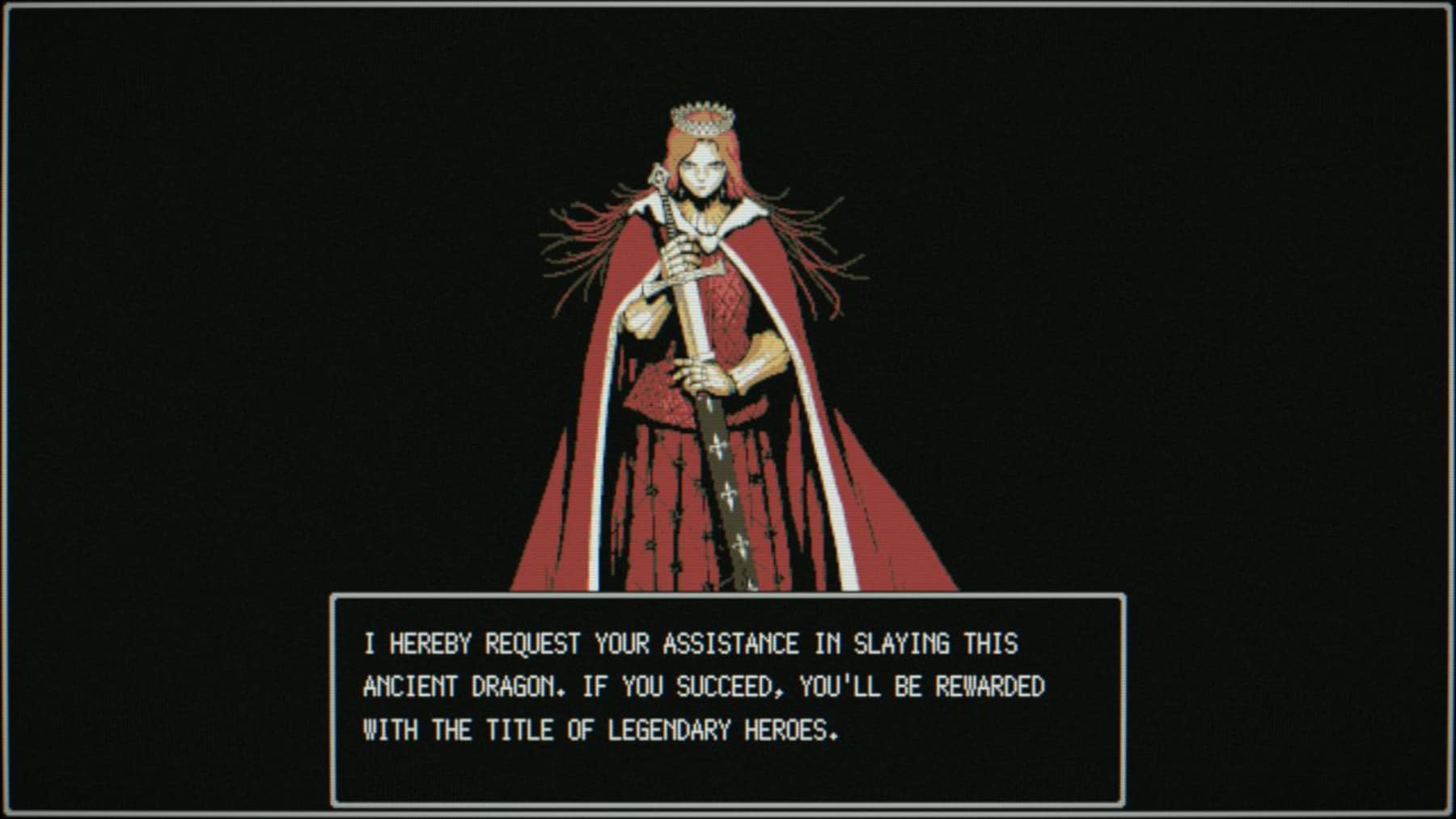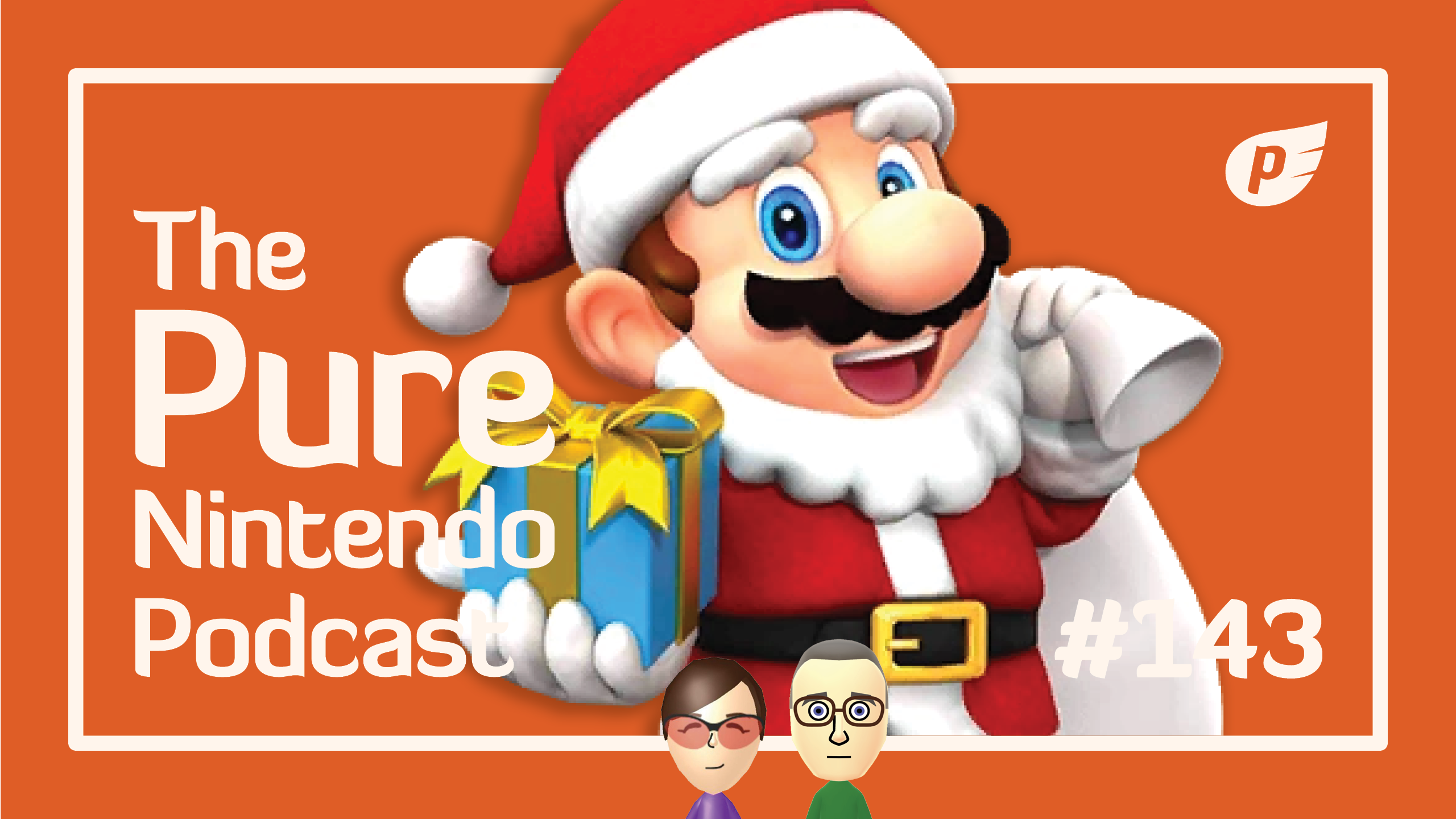Review: Dragon Ruins (Nintendo Switch)

So, you say you like an old-school dungeon crawl? We have just the thing for you…especially if, like myself, your school is so old that its hallways were single-bit.
Dragon Ruins (from old-school provost KEMCO) features, shall we say, “limited graphics,” but that doesn’t mean it isn’t a fun game. The walls and doors may be pencil-thin white lines on a field of black, but it still conveys the basic information you need (and the background music is well done, helping to set a proper mood).
This is only one step up from Zork where all you had was text and you had to bring your own paper and pencil to map things out. On the up-side, the on-screen map reveals what you have seen as you explore the dungeon, so you can press a button and see the whole map and your position on it—no pencil required.
Don’t worry, not everything is black with white lines. There are some picture tiles which show you an image of the members of your party. You are also provided a picture tile of the monsters you encounter in the dungeon, and you will encounter plenty of monsters. As you explore, what you see before you are your immediate surroundings: a hall, a doorway, a room. In the upper left of the screen the game shows you a small area map so you can see a bit further. If you press the Y button you can toggle the big map that will display what you have already explored.
As you wander around the dungeon, you won’t see any monsters in the distance so you can avoid them; these encounters will happen and the combat will start as soon as you enter a monster-populated area. The combat is where things can get interesting. There is no turn-taking in this game; once the encounter starts, it will only end with one of three outcomes: you defeat all the monsters, the monsters defeat your entire party, or you run away. Sometimes (especially very early in the game) running away is a wise option. Be careful not to get turned around and run yourself into a corner or a wall; this will just give the monsters more time to pound on you. It sounds like a no brainer, but with the very limited visual cues you can get disoriented easily.
If you decide to flee to preserve your last couple hit points, all you need to restore full health is to make it to the start point. Enter the grid with the ladder and you return to street level where all your hit points are restored and you have the opportunity to spend your booty on things like levelling up and weapon upgrades. This is an old-school dungeon crawl, so be ready for lots of this routine. If your whole party dies, someone will eventually find you so you can start again. Time passes while you wait to be found, so a lot of monsters will respawn for you to face again. The respawn rate and the type of monsters in an area is somewhat randomized, so there is no fixed pattern to remember.
With much of the action happening automatically, most of the gameplay comes down to turning and moving forward (that’s the only way to navigate in this game) and just letting things happen. The game is part exploration, part level grinding, and part patience to get through all the little rooms and corridors. If you do find and slay the dragon, you are dubbed a “Legendary Hero.”
Unfortunately, every time you slay the dragon, the lady shows up again “a year later” to tell you they need your party to slay a dragon again. The dungeon map will be the same, but the dragon will pop up in a new location, so stay alert.
This brings me to another aspect of the game that helps the replay value. There are two ways you can play: Original or Extra Crispy. No, wait: that’s supposed to be Original or Remix. In the Original option, the party members are selected for you. Remixed, you can select your own party members from a list of options. When choosing party members in Remix, don’t forget that the first two from left to right are placed in the front row while the next two are in the back. For all the D&D types out there (yes, I left out the A; this game is that old school) the party members in the front are usually the tanks.
A word of caution when starting a Dragon Ruins—once you select Original or Remix, the new game will replace the old game. The dungeon layout between Original and Remix is different, but the dungeon doesn’t seem to change with a new game, so there is a limitation there.
There is a certain, simple pleasure to playing Dragon Ruins. On my first pass through the Remix dungeon in handheld mode, I only stopped when I got the Switch’s “low battery” alert—a feat many games with modern sensibilities fail to achieve.








